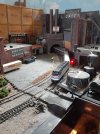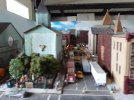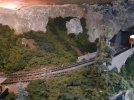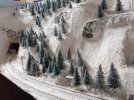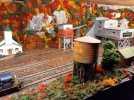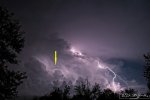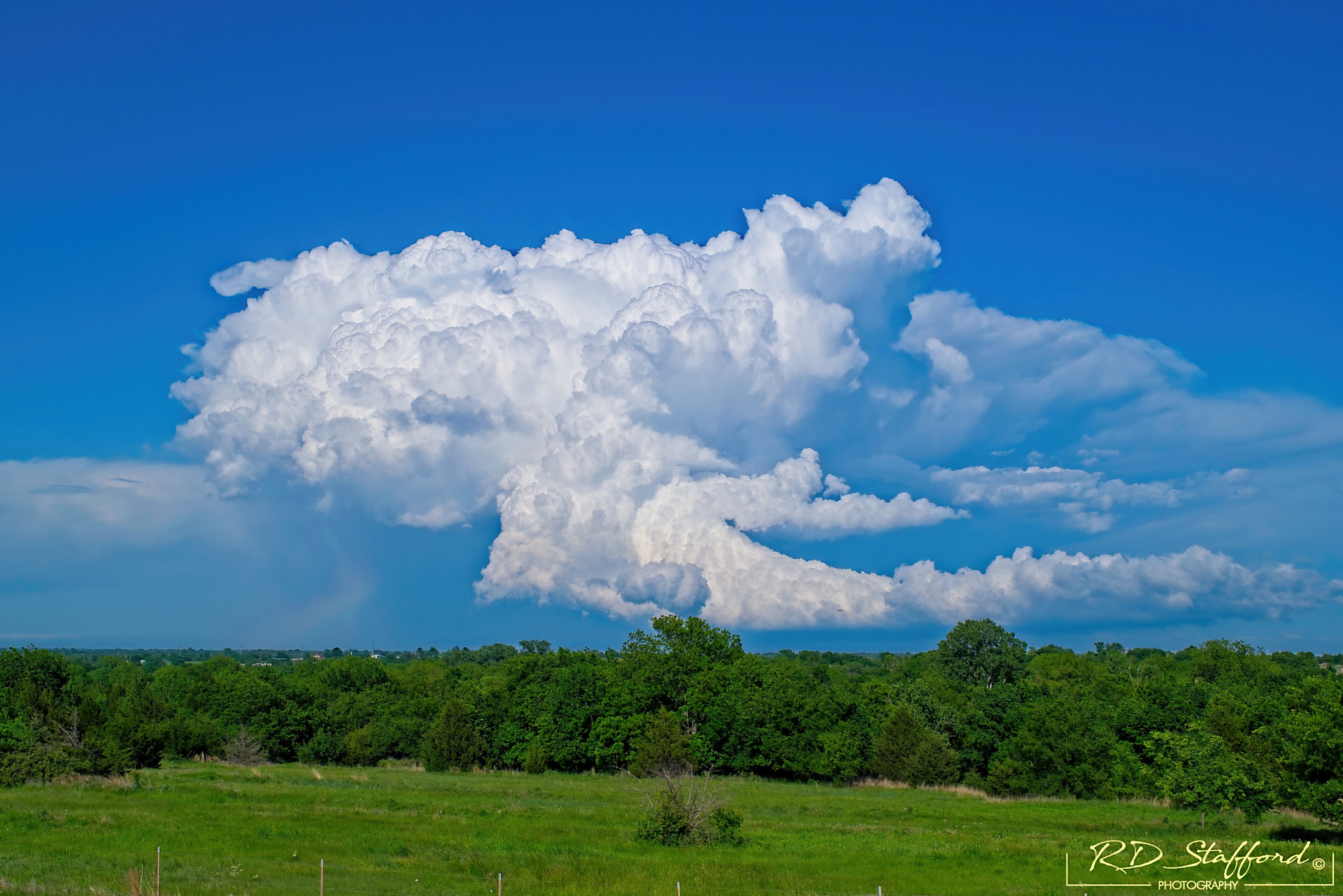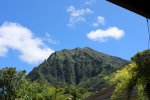RandyDSok
Well-Known Member
Wow, it's really amazing where cameras are now. And to add them to computers and things like a fully loaded Mead LX 200's, would be even nicer. Nice to dream.
Astrophotography is a fun rabbit hole to go down. You don't even need a telescope to get started, just a decent 200-300mm lens that you can switch into manual focus mode and sturdy tripod and a remote wireless trigger so you don't shake the camera/tripod when you click it to take a pic. Solar photos will also require a 16.5 f stop filter ( that is a ND 100000 ) and a box to put the camera in so most of it is shaded and only the lens is exposed.
For the dimmer deep sky objects, you find out what the longest time the lens you use will allow you to take a shot without also producing star trails ( which are also fun in themselves )... and you take several hundred pictures after you get the camera and lens manually focused in... then you use software to stack them together. After the stacking is done, you do what is usually called stretching the exposure... basically just bringing up the exposure level only for the light areas up and not the black areas... and balance the RGB signals since these wavelengths all focus differently. Cropping into the area of interest is another step in the process..
With solar photography using a filter... light levels are never the issue. Just point, adjust your ISO and exposure... and go. During a solar or lunar eclipse, you have to change your exposure time as the event progresses because of the vastly different levels of light through each of the "phases"
Some of what I've done can be seen here Sun, Moon & Stars – Rdsok.net ... and some of my favorites are on my front page here Rdsok.net – CAPTURING MOMENTS IN TIME
Manual focusing is tough and when doing fine work with stars, the Sun/Moon etc... fiddley at best. I will use my rear screen for this for the most part and change the focus back and forth "a million times" to get my lens to finally settle into the focus I want. My wireless monitoring of the focus is terrible on my camera, so I'll take some test shots when I think I've got it, turn off the camera and take out the memory card... then look at the results on my computer. If your camera has a focus assist mode where it magnifies the image, use it during focusing. Rinse and repeat as needed. Bumping the tripod and the wind will cause out of focus shots all of the time. If your camera uses a mirror to switch between the eye piece and the sensor, lock it up so it is sensor only to limit the vibrations that may cause. The required post-processing is almost as tedious but when you get a shot you like, it's well worth the effort in the end of getting something you can be proud of... it just takes a lot of time and practice.
Using an actual telescope with tracking and all of that... consists of all of that plus the telescope stand setup procedures needed for a proper polar alignment. Additionally you'd also need a T-ring adapter with a tube the right length to place your camera sensor at the focal point of the telescope lens. Adapter lens like focal reducers can also help by giving you a wider angle shot as well as making the telescope "faster" so your shots don't require as long of an exposure. I believe most newer scopes include or can have as an option, computer controls on them to help with star tracking etc.
 . Model railroading
. Model railroading Remember those Lionel trains back in the 50's, that was me until I went in the army as a 18 year. My dad got me involved when I was 5 years old and every year we went to the Lionel Headquarters every Christmas in Mid town Manhattan, NYC. Lost interest while in South Vietnam, think you can understate why. So my parents donated the hold layout about $500.00 in 1960's prices then to a children hospital. Worth over $20,000.00 today, but all is good. It was while station in West Germany that I got into model airplanes hot and heavy. It was a perfect fit since I was already in a helicopter unit for the last 4 years. Belong to a American German club and met some of the nicest folks in the world. AN army pilot took me under his wing and taught me how to fly. Back then there were no foam kits and all planes were made of balsa with small non electric engines. No S.A.F.E. , gyros or any other system available. Stay with that until returning to the states in 1975, we were station at Fort Hamilton in Brooklyn New York. So I had all these large model airplanes in our base housing and no where to really store them
Remember those Lionel trains back in the 50's, that was me until I went in the army as a 18 year. My dad got me involved when I was 5 years old and every year we went to the Lionel Headquarters every Christmas in Mid town Manhattan, NYC. Lost interest while in South Vietnam, think you can understate why. So my parents donated the hold layout about $500.00 in 1960's prices then to a children hospital. Worth over $20,000.00 today, but all is good. It was while station in West Germany that I got into model airplanes hot and heavy. It was a perfect fit since I was already in a helicopter unit for the last 4 years. Belong to a American German club and met some of the nicest folks in the world. AN army pilot took me under his wing and taught me how to fly. Back then there were no foam kits and all planes were made of balsa with small non electric engines. No S.A.F.E. , gyros or any other system available. Stay with that until returning to the states in 1975, we were station at Fort Hamilton in Brooklyn New York. So I had all these large model airplanes in our base housing and no where to really store them . Found a fellow soldier who was going to be station in Europe, so I sold everything to him. He was happy and I also was happy with a pocket full of money
. Found a fellow soldier who was going to be station in Europe, so I sold everything to him. He was happy and I also was happy with a pocket full of money . My brother in law who was a NYPD officer got me interested back in model trains. And the rest is history since then. Every year got more involved in the hobby to the point started scratch building everything except the trains. Built a model train layout in every place we were station. Several years ago year 2000, in our present home built a layout that filled the garage minus space for the washer and dryer. That year hosted a model railroad tour group that 40 people visited my home. These are just a few photos of another one that's 2.5' x 8' double deck layout that been working on for past 15 years. Total weight is about 200 lbs
. My brother in law who was a NYPD officer got me interested back in model trains. And the rest is history since then. Every year got more involved in the hobby to the point started scratch building everything except the trains. Built a model train layout in every place we were station. Several years ago year 2000, in our present home built a layout that filled the garage minus space for the washer and dryer. That year hosted a model railroad tour group that 40 people visited my home. These are just a few photos of another one that's 2.5' x 8' double deck layout that been working on for past 15 years. Total weight is about 200 lbs . 95% of the buildings are made by hand with complete detail interiors with both inside and outside lighting. There are over 50 vehicles and at least 500 hand painted people ( use a set of jeweler glasses for this fun task). All trains are run by digital command control which means they have a small decoder receiver in the engines. Thus allowing you to run as many as 50 trains on a layout at one time. Each one set at it's own speed. Similar to 2.4 Ghz for model aircraft, remember the old days in the hobby when you were flying on 27 or 72 mhz with a small flag? Well model trains still run on DC but have to have block control to rule more than one train. I would say this layout is worth about $5,000.00 with all the time, equipment invested. So what I did two years ago is gave this completed layout to my grandson for Christmas
. 95% of the buildings are made by hand with complete detail interiors with both inside and outside lighting. There are over 50 vehicles and at least 500 hand painted people ( use a set of jeweler glasses for this fun task). All trains are run by digital command control which means they have a small decoder receiver in the engines. Thus allowing you to run as many as 50 trains on a layout at one time. Each one set at it's own speed. Similar to 2.4 Ghz for model aircraft, remember the old days in the hobby when you were flying on 27 or 72 mhz with a small flag? Well model trains still run on DC but have to have block control to rule more than one train. I would say this layout is worth about $5,000.00 with all the time, equipment invested. So what I did two years ago is gave this completed layout to my grandson for Christmas And NOW besides enjoying the fruits of model aviation again hand building two more train layouts for my other grandsons
And NOW besides enjoying the fruits of model aviation again hand building two more train layouts for my other grandsons